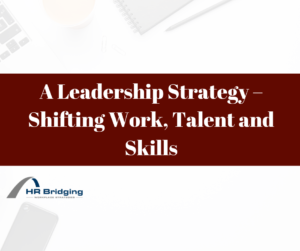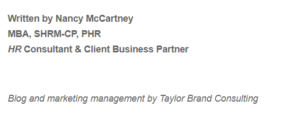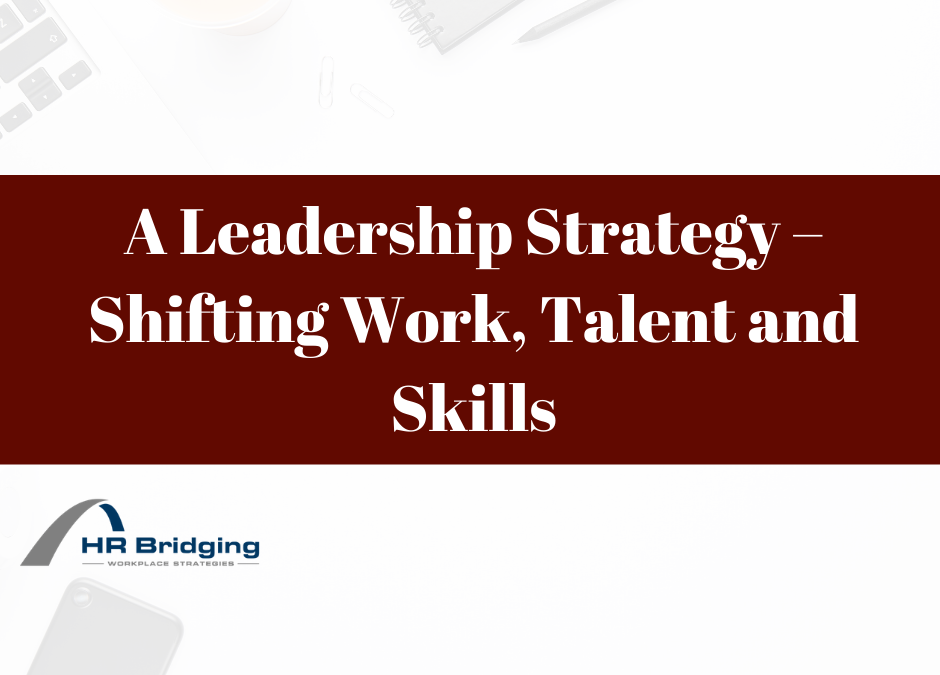
After forcing organizations into significant change, the COVID crisis has fundamentally altered not only where work is performed but what work is performed. Creating an immediate need to improvise the business sector’s resilience, leaders now have an extraordinary opportunity to reimagine how work gets done. With such a radical, almost abrupt move into changing the way we work and interact with others, employees are taking on alternative responsibilities while delivering even greater focus on customer service, client relations, vendor management and collaboration… all in the name of business continuity [and survival].
This is a difficult transition as leaders in charge may be tested in areas where the learning curve can be steep… leading a new strategy at the time of unforeseen crisis. Not only will roles and responsibilities of many workers change, and need to change, but so will those that lead. For all to move forward in a time when cognitive overload occurs daily, sometimes hourly, information must be processed quickly in support of those decisions being made, often to control cost(s) while maintaining liquidity. Continuity in business is key! In order to do this, an organization needs a simple framework for decision-making. With reopening and phasing employees back, employers are faced with additional changes and an immediate need to structure their businesses around the new norm. Undertaking this leadership strategy will reflect on how an organization responds to the very real initiatives needing focus.
Crisis has a way of putting priorities in order! The framework, built on the traditional SWOT analysis (strengths, weaknesses, opportunities, threats), provides an organization with a consistent process to support its intentional shifting of work, talent and skills. While not new to many leaders, engaging employees from all levels is important in the job analysis when developing a list of projects and activities that contribute to identifying responsibilities for each position. Identifying those positions that empower decision-makers is critically important to moving business forward. Employees contributing alongside their leaders to “re” build the framework will reinforce motivation and strength in an organization to better withstand more changes, while retaining talent.
Essential to remain competitive and evolve in the crisis, redesigning jobs to what work is to be completed is the next step. Align the job description with objectives and expectations of deliverables as well as what behaviors [competencies] will bring success. As a leader, engage with employees in the interactive process of understanding telework needs and an employee’s work-life balance to ensure the organization is complying with regulations, including those newly issued during this pandemic. Remember, essential functions are basic job duties that an employee must be able to perform, with or without reasonable accommodation… and the definition of accommodation has certainly expanded with the pandemic. Organizations that put the time in to analyze and design new job descriptions will better navigate such disruption.
An effective communication tool, the job description establishes guidelines for employee performance and yes, even in a pandemic it is important for both the leader and employee to know what is expected. While not required, when a job description is written it is important to also clarify FLSA exemption status, classification and physical requirements, along with statements focused on safety, ADA, at-will, etc. Compliance is critical and should be a part of every discussion to include considerations that align with safety precautions, telework options, flexible schedules, shifting schedules, etc.
Having strategic clarity wherein positions are redesigned to support shifting of work and talent, when done professionally and compliant, the outcome can prove to be a significant performance differentiator. Taking a more organized approach to talent matching, avoiding unconscious biases, will support compliant and equitable decisions by leadership. While reviewing knowledge, skills and abilities, use the advisement of Human Resources to consider demographics and other employment-related matters in all circumstances. Competencies are also key as there is a difference between an individual contributor position and one that manages (especially the decision-maker) with competencies and skills needed for each. Finding that balance in supporting an employee who is expanding their skill set while acquiring more experience and developing competencies will also contribute to the growth of an organization. Keep in mind any regulatory requirements when making changes to a job description and an employee’s responsibilities, including compensation. Consideration must be given prior to rolling out and implementing the new design.
Effective leaders continue to be flexible, understanding of their team’s circumstances and distractions while finding new and better ways to engage and motivate, clearly and thoroughly communicating important innovative objectives and information. Leaders need to reiterate new priorities frequently to ensure continued alignment in this time of constant and stressful change.
In addition to many priorities with the workforce, reviewing and updating policies and procedures are needed on a continuous basis to meet more robust needs and regulations. Please note that all the items covered in this guidance may be subject to additional regulations as it is intended to be informational only. Having advisers such as Human Resources or legal counsel to guide, implement and adjust as needed in our ever-changing environment is recommended.
HR Bridging, a division of McCartney Resources, is an established Human Resources firm with experienced, certified professionals ready to assist. Our team of HR experts have extensive experience in human resources, solid business acumen and a strong understanding of operations and objectives – spanning a wide variety of industries. Call today (866) 477-8728 or email us at info@HRBridging.com.



